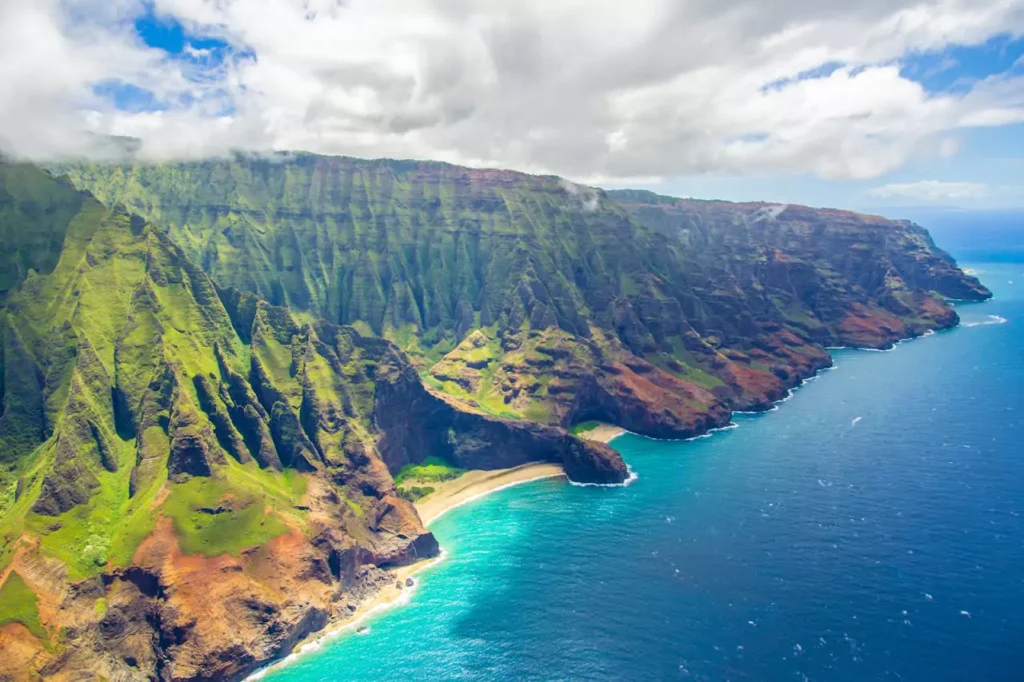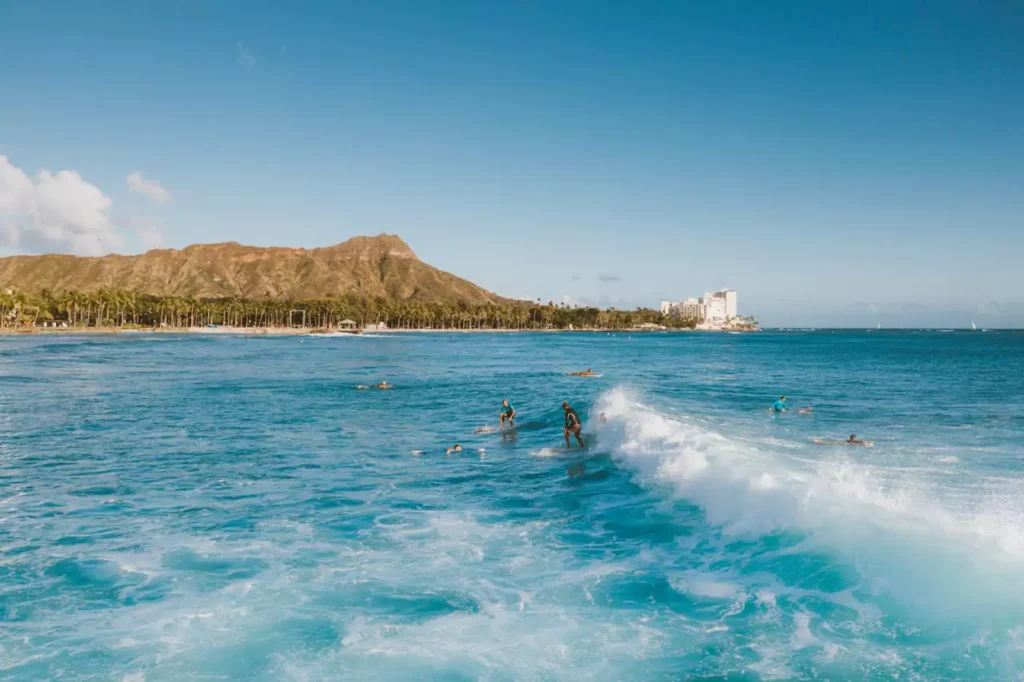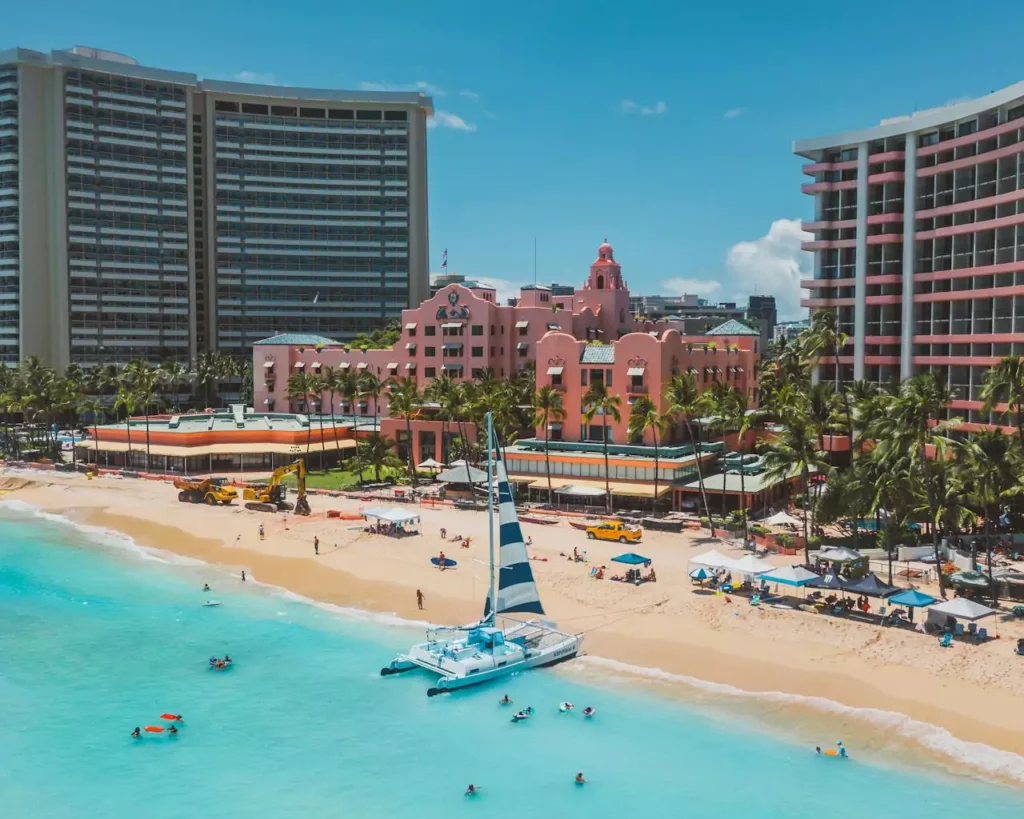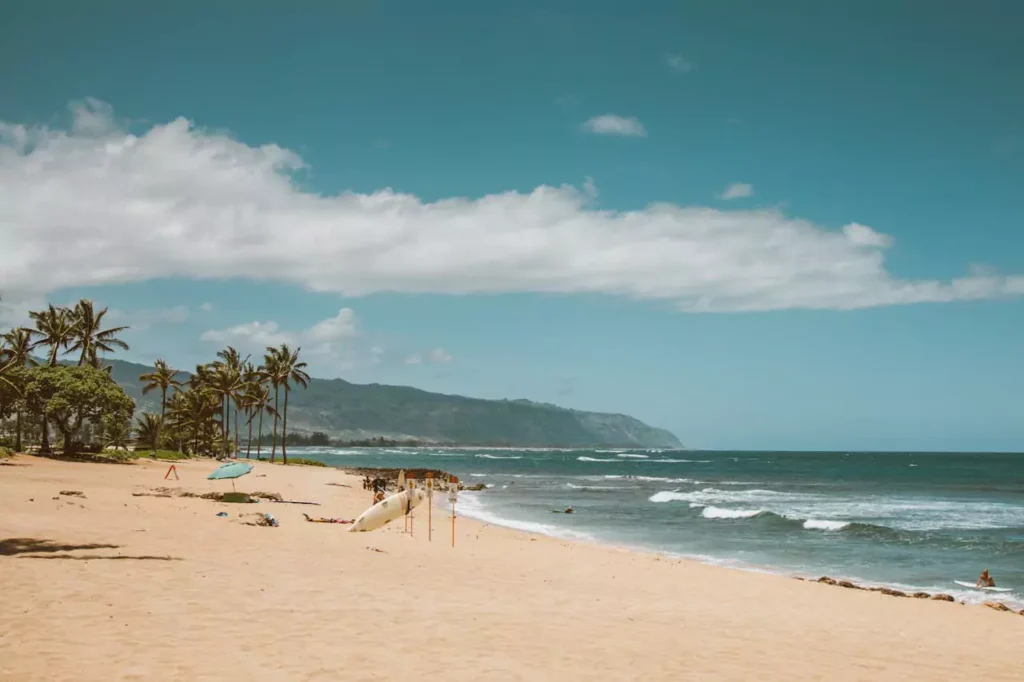Are you dreaming of a Hawaiian escape where you can experience the perfect blend of sun-drenched beaches, lush landscapes, and awe-inspiring natural wonders? Planning the best time to travel to Hawaii is key to making your island getaway everything you envision and more. Hawaii’s seasons offer unique experiences and exclusive deals, and by choosing your timing well, you’ll find the best of what the islands have to offer—all while staying within your budget.
Table of Contents
Aloha to Paradise! Discovering Your Perfect Time to Visit Hawaii
Imagine arriving in Hawaii, stepping out into a warm breeze that smells of fresh flowers, your stress melting away with each passing wave. Whether you’re dreaming of snorkeling in crystal-clear waters, hiking scenic volcano trails, or exploring vibrant local markets, picking the right time to go to Hawaii ensures the best possible experience.
Let’s take a journey through Hawaii’s seasons to help you find the perfect timing for your trip and make the most of every moment you spend in this paradise.
Hawaii’s Climate and Seasons: An Overview
Hawaii is known for its tropical climate, offering warm temperatures throughout the year. This consistent warmth makes it a year-round destination for travelers seeking sunshine, beaches, and outdoor adventures. However, Hawaii’s weather patterns vary slightly across its two distinct seasons and geographical regions, offering unique experiences depending on the time of year you visit.
Two Main Seasons
Winter (Hooilo)
From November to April, Hawaii experiences its cooler season, known as “Hooilo.” During this time, temperatures are mild, averaging between 68°F to 80°F (20°C to 27°C). While still warm compared to mainland winters, this season brings increased rainfall, particularly on the windward (northern and eastern) sides of the islands. This is also the peak season for whale watching as humpback whales migrate to Hawaiian waters, making it a popular time for marine enthusiasts.
Summer (Kau)
Hawaii’s summer, or “Kau,” spans from May to October. This season is characterized by warmer temperatures ranging from 75°F to 88°F (24°C to 31°C) and drier weather, particularly on the leeward (southern and western) sides of the islands. Summer is ideal for beachgoers and outdoor enthusiasts, as the days are longer, and the ocean is calm, making it perfect for snorkeling, paddleboarding, and other water activities.
Rain Patterns
Rain in Hawaii is an integral part of its tropical charm. While showers are common, they are typically brief and followed by sunshine, leaving the air fresh and rejuvenated. The rainiest months usually fall during winter, but the intensity and frequency depend on the region. The northern and eastern sides of the islands receive more rain due to their exposure to trade winds, which bring moisture from the ocean. In contrast, the southern and western sides are drier, often referred to as “sunny sides.”
Trade Winds
A defining feature of Hawaii’s climate is its consistent trade winds, which blow from the northeast throughout the year. These winds play a crucial role in maintaining comfortable temperatures, even during the hottest months. Stronger trade winds in the summer provide natural ventilation, making outdoor activities more enjoyable and the heat less intense.
Best Time to Visit
Deciding when to visit Hawaii largely depends on your preferences. If you enjoy cooler weather and lush green landscapes, winter is an excellent time. For those seeking endless sunny days and calm seas, summer is the way to go. Regardless of the season, Hawaii’s natural beauty and welcoming climate ensure an unforgettable experience year-round.

When is the Weather in Hawaii at Its Best?
Hawaii’s weather is delightful year-round, but certain months offer more favorable conditions for travelers seeking comfortable temperatures, fewer crowds, and even better deals. April, May, September, and October are widely regarded as the best times to visit Hawaii. These shoulder-season months strike the perfect balance between peak-season buzz and off-season tranquility.
Benefits of Visiting During Shoulder Seasons
- Milder Weather: During these months, the temperatures are warm but not excessively hot, making outdoor exploration more enjoyable.
- Fewer Tourists: With fewer visitors compared to peak seasons like winter and summer holidays, you can enjoy a more relaxed and serene experience.
- Better Travel Deals: Airfare and accommodations tend to be more affordable during these months, offering excellent value for budget-conscious travelers.
Breakdown of Ideal Months
April and May
Spring in Hawaii is marked by comfortable weather with average temperatures ranging between 72°F and 85°F (22°C to 29°C). These months bring a burst of blooming flowers and vibrant greenery, making it a great time for nature lovers. With fewer crowds, you’ll have better access to popular hiking trails, snorkeling spots, and sightseeing destinations. Spring also offers calm seas, ideal for whale watching before the migration season ends in late April.
September and October
As summer transitions to fall, Hawaii’s weather remains warm and inviting, with average temperatures from 75°F to 87°F (24°C to 30°C). The ocean is at its warmest during these months, making it perfect for swimming, paddleboarding, and other water activities. Rainfall is minimal, especially on the leeward sides of the islands, and the post-summer lull means quieter beaches and attractions.
Special Events and Highlights
- April: You can catch the tail end of whale-watching season and experience the islands in full bloom.
- May: Lei Day (May 1st) celebrates Hawaiian culture with floral garlands and traditional decorations.
- September: The Aloha Festivals, held in September, showcase Hawaiian cultural events.
- October: Enjoy the tranquility of post-summer Hawaii and warmer ocean temperatures for diving and snorkeling.
No matter which month you choose, these periods provide the ideal blend of pleasant weather, fewer crowds, and affordability, ensuring an unforgettable Hawaiian getaway.

How to Score Great Deals on Flights and Accommodations in Hawaii
Planning a trip to Hawaii doesn’t have to break the bank. With strategic timing and a few savvy tips, you can enjoy a dream vacation at a fraction of the usual cost. By traveling during Hawaii’s off-peak seasons, particularly in April-May and September-October, you’ll not only save money but also enjoy fewer crowds and a more relaxed atmosphere.
Off-Peak Advantages
Visiting during the shoulder seasons has several benefits for budget-conscious travelers:
- Lower Flight and Accommodation Costs: Airlines and hotels often reduce their rates during these months as demand decreases.
- Fewer Tourists: With smaller crowds, you’ll have more space to explore popular attractions and enjoy a quieter experience.
- Exclusive Deals: Many tour operators and activity providers offer discounts during off-peak periods, adding value to your trip.
Booking Tips for Affordable Travel
- Book in Advance
- Plan ahead and secure your flights and accommodations 3-6 months before your travel dates. This window typically offers the best prices and availability.
- If you’re eyeing a specific resort or airline, early bookings can ensure you get your preferred options at lower rates.
- Stay Flexible
- Flexibility in travel dates can help you take advantage of last-minute deals. Airlines and hotels often offer discounts to fill empty seats or rooms close to departure dates.
- Consider flying midweek, as flights on Tuesdays and Wednesdays are often cheaper compared to weekends.
- Sign Up for Alerts and Use Deal Platforms
- Use travel deal websites like Skyscanner, Kayak, or Google Flights to monitor airfare and hotel prices. Set up price alerts to stay updated on sudden drops or special offers.
- Follow airlines and hotels on social media or subscribe to their newsletters for exclusive discounts and promotions.
- Consider Vacation Rentals
- Platforms like Airbnb or Vrbo often have more affordable options compared to hotels, especially for longer stays or group trips.
- Look for rentals with kitchen facilities to save on dining expenses by preparing some of your meals.
- Travel in Groups
- Traveling with family or friends can reduce costs as you can split expenses like accommodations, car rentals, and even groceries.
Bonus Tips
- Check for Package Deals: Travel agencies and booking sites often bundle flights, accommodations, and car rentals at discounted rates.
- Avoid Hidden Fees: Look out for resort fees, parking charges, and other hidden costs when booking accommodations.
By planning wisely and traveling during off-peak seasons, you can experience the beauty of Hawaii while staying within your budget. With fewer crowds and great deals, you’ll enjoy both savings and serenity in paradise.

When to Visit Hawaii for Outdoor Adventures and Cultural Experiences
Hawaii is a playground for outdoor enthusiasts, offering everything from snorkeling in vibrant coral reefs to hiking volcanic landscapes. Choosing the best time to travel to Hawaii can also mean picking the right months for your favorite activities and experiences.
Best Months for Water Activities
- June through September: These months bring calm seas and warm waters, creating the perfect conditions for snorkeling, scuba diving, and swimming. The clear, shallow waters around the islands make it easy to explore vibrant coral reefs, see tropical fish, and enjoy the serenity of Hawaii’s underwater world. These months are ideal for beach lovers, as well as those who enjoy paddleboarding, kayaking, and other water sports.
- December through March: Winter is a prime time for water sports enthusiasts, particularly for surfers. The north shores of Oahu and Maui offer world-renowned waves, making it an exciting season for those looking to experience Hawaii’s legendary surf culture. If you’re more into tranquil waters, consider the south and west shores during these months, which offer calmer seas perfect for swimming and relaxing in the sun.
Hiking and Sightseeing
- October through April: If hiking and exploring Hawaii’s lush landscapes are on your list, winter offers the ideal conditions. While some higher-altitude hikes can be cooler, most trails remain accessible and provide excellent visibility, allowing you to fully appreciate the stunning panoramic views. The islands’ abundant rainfall during this period creates lush greenery and waterfalls, especially in areas like the Nā Pali Coast on Kauai, or the Hana Highway on Maui. Hiking through Hawaii’s rainforests, valleys, and volcanic craters offers a unique opportunity to connect with nature and witness the island’s diverse ecosystems.
- Mountain and Volcano Exploration: Whether you’re hiking to the summit of Haleakalā in Maui to watch a breathtaking sunrise or exploring the volcanic landscapes of the Big Island’s Hawaii Volcanoes National Park, there’s no shortage of awe-inspiring outdoor experiences. Many trails offer scenic vistas, peaceful surroundings, and an opportunity to witness Hawaii’s geological history firsthand.
By adjusting your travel dates to these ideal months for water activities and hiking, you can enjoy the best of Hawaii’s outdoor beauty and natural wonders. From crystal-clear waters to majestic volcanic landscapes, there’s always an adventure waiting for you.
Find the Best Time for Your Ideal Hawaiian Escape: A Month-by-Month Guide
Here’s a month-by-month guide to help you choose the best time to visit Hawaii based on weather, crowds, and unique experiences.
January to March
- Weather: Cooler temperatures and some rain showers, especially on northern coasts.
- Highlights: Ideal for whale watching as humpback whales migrate to Hawaiian waters.
- Crowds: High tourist season, so expect higher prices and more people.
April to June
- Weather: Pleasant, with mild temperatures and blooming spring flora.
- Highlights: Spring festivals and off-peak travel deals.
- Crowds: Fewer tourists, making it a peaceful time for sightseeing.
July to August
- Weather: Warm and dry, with ideal beach conditions.
- Highlights: Great for families, as it’s summer vacation for most schools.
- Crowds: High season, with increased prices on flights and accommodations.
September to November
- Weather: Warm with less rain; ocean temperatures are still perfect for water activities.
- Highlights: cultural activities and local markets showcasing Hawaiian crafts and tradition.
- Fewer tourists: Off-peak season, perfect for those looking to save money.
This guide should help you pinpoint the best months for your Hawaiian escape and make planning a breeze.

What to Pack for Your Hawaiian Vacation, No Matter the Season
Packing Wisely for Your Hawaii Adventure
Packing wisely is key to ensuring a stress-free and enjoyable trip to Hawaii. The islands’ tropical climate means you’ll need lightweight, breathable clothing, but bringing a few extras will make your stay even more comfortable and adaptable to the island’s changing weather conditions. Here’s a guide to help you pack the essentials for an unforgettable Hawaiian escape:
General Essentials
When heading to Hawaii, you’ll want to keep your packing list simple yet practical. Here are the absolute must-haves:
- Sunscreen: The Hawaiian sun can be intense, and it’s important to protect your skin. Opt for reef-safe sunscreen to preserve the delicate coral reefs, as some sunscreens can harm marine life. Be sure to pack enough for daily use, especially if you’re planning on outdoor activities like hiking or water sports.
- Lightweight Clothing: Pack comfortable, breathable clothing such as cotton or linen shirts, shorts, and dresses to stay cool in the warm temperatures. The islands have a casual dress code, so you don’t need to worry about formal wear. Comfortable clothes are key to enjoying the laid-back atmosphere of the islands.
- Beach Towels: Many resorts and hotels provide beach towels, but it’s always a good idea to pack your own to ensure you have one ready when you want to hit the beach or participate in water activities.
Rainy Season Gear
Though Hawaii is known for its tropical beauty, it’s also home to areas that experience frequent rainfall, especially during the winter months. Be prepared for these changes in weather by including:
- Light Rain Jacket: While rain showers are usually brief and refreshing, a light, packable rain jacket will help you stay dry if you’re caught in a downpour, especially if you plan on visiting the rainier parts of the islands like Hilo on the Big Island or the lush north shore of Kauai. A waterproof jacket will also provide extra warmth if you’re hiking in cooler, higher altitudes.
- Waterproof Footwear: A pair of waterproof sandals or shoes will come in handy when exploring Hawaii’s lush forests, waterfalls, and beaches, where mud and wet conditions can often make hiking or walking a bit tricky.
Activity-Specific Gear
Hawaii offers a wide variety of outdoor activities, from snorkeling and scuba diving to hiking and surfing. Packing the right gear for these activities ensures you can fully enjoy all that the islands have to offer:
- Snorkel Gear: While many resorts and rental shops offer snorkel equipment, bringing your own mask, fins, and snorkel ensures a better fit and a more comfortable experience in the water. If you plan on snorkeling at popular spots like Hanauma Bay or Molokini Crater, your own gear will be more hygienic and convenient.
- Sturdy Hiking Shoes: If you plan on exploring Hawaii’s famous trails, like the Kalalau Trail on Kauai or the Pipiwai Trail in Maui, be sure to bring sturdy, supportive hiking shoes. The terrain can be rocky, muddy, and uneven, so having proper footwear will help prevent discomfort and injury as you navigate through the islands’ stunning landscapes.
- Reusable Water Bottle: Stay hydrated while you explore the islands’ natural wonders. Hawaii’s tropical climate can make you thirsty, especially when hiking or enjoying outdoor activities. Carrying a reusable water bottle not only keeps you refreshed but also helps reduce plastic waste, which is a growing concern on the islands.
By packing these essentials, you’ll be ready for anything that comes your way during your Hawaiian adventure. From sunny beach days to hiking in the rainforests or snorkeling in crystal-clear waters, these items will ensure you’re comfortable and prepared to fully enjoy your trip.

Make the Most of Your Hawaiian Adventure with These Travel Tips
To ensure your Hawaiian vacation is smooth, enjoyable, and culturally respectful, consider these essential travel tips. From understanding local customs to preparing for outdoor adventures, these guidelines will help you make the most of your time in paradise.
Island Etiquette
The people of Hawaii hold a profound bond with their land, heritage, and cultural practices. Showing respect and consideration for local customs is essential:
- Respect “Kapu” Areas: “Kapu” means forbidden, and these areas often hold cultural or spiritual significance. Always heed posted signs and avoid trespassing.
- Ask for Permission: When exploring less-touristy areas, such as hiking trails or beaches near private property, always seek permission from locals.
- Embrace Aloha Spirit: The “aloha spirit” represents kindness, respect, and harmony. Simple gestures like a warm greeting or learning a few Hawaiian words show your appreciation for the culture.
Transportation Tips
Getting around Hawaii and between islands requires some planning:
- Book Rental Cars Early: Rental cars are in high demand, and availability can be limited, especially during peak travel seasons. Secure your reservation as soon as your trip dates are set.
- Consider Public Transit or Tours: On Oahu, public transportation is reliable and affordable, particularly for visiting popular spots like Waikiki or the North Shore. Guided tours can also be a great option to explore less accessible areas.
- Plan Inter-Island Travel: Most inter-island travel is done via short flights with airlines like Hawaiian Airlines or Southwest. Booking in advance typically guarantees more favorable prices and a wider selection of flight options.
Health and Safety Tips
Hawaii’s natural beauty is breathtaking but can pose challenges if you’re not prepared:
- Stay Hydrated: The tropical climate can be dehydrating, especially during outdoor activities like hiking or snorkeling. Carry plenty of water with you.
- Pack Sun Protection: Bring reef-safe sunscreen to protect your skin and Hawaii’s delicate marine ecosystems. Hats and sunglasses are also recommended for added protection.
- Follow Safety Guidelines: Pay attention to warning signs at beaches and trails. Ocean currents can be strong, and some trails may have uneven or slippery terrain.
- Wear Proper Gear: For hiking, sturdy shoes are essential. If you plan to snorkel, consider bringing or renting high-quality equipment for a safer and more enjoyable experience.
Bonus Tips
- Plan Your Itinerary: Each island offers unique attractions, so research ahead of time to prioritize your must-visit spots.
- Support Local Businesses: Dining at local restaurants, shopping at markets, and booking tours with local guides enhance your experience and benefit the community.
- Be Eco-Conscious: Respect Hawaii’s natural environment by following the “leave no trace” principle. Properly dispose of trash and avoid interfering with wildlife.
By following these tips, you’ll not only make your trip smoother but also leave a positive impression on the local community, ensuring an enriching and memorable Hawaiian adventure.
Your Hawaiian Paradise Awaits
With this guide, you’re now prepared to find the best time to travel to Hawaii and enjoy exclusive deals for your dream island escape. Whether you’re visiting during Hawaii’s serene shoulder seasons or soaking up the sun in summer, your trip will be filled with unforgettable moments. Start planning today, and turn your dream of a Hawaiian paradise into reality!
Take the next step by browsing flights, comparing accommodations, and getting ready to embrace the Aloha spirit. Share this article with family or friends planning a Hawaiian trip, and begin your journey to paradise together!

